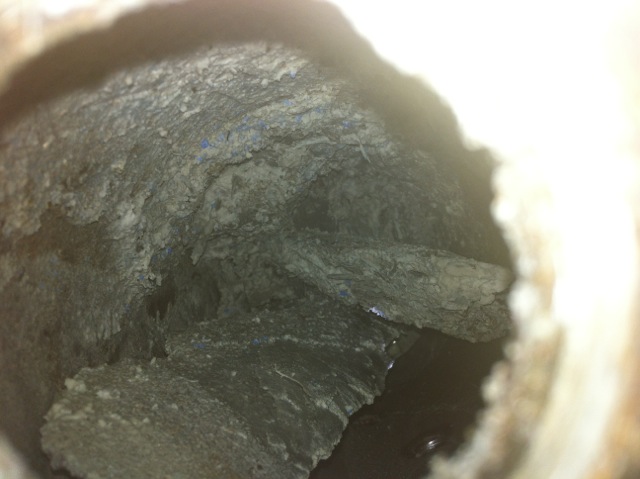We wanted to write a little bit about why we now require wholesale customers in hard water areas to use reverse osmosis, because we believe there is a little confusion out there.
Our goal, as a roaster and supplier, is for our customers to have successful and sustainable businesses. If they’re succeeding then we succeed too.
Water provides a two fold challenge to cafes in the South East of England and in other hard water areas:
Scale
Imagine leaving a kettle boiling 24 hours a day, think of how quickly it would be coated in scale and residue. This is what the steam boiler on an espresso machine is doing, often 24/7.
Hard water rapidly damages equipment if it isn’t treated properly. 95% of service calls we’ve dealt with in the last 5 years have been due to the build up of scale. We have no interest in profiting from scale, and when it does affect a machine it can often take the machine out of service for a period of time. To descale and repair will cost a lot of money and, combined with a loss of earnings, the bill can be large enough to place a painful pressure on a coffee shop business. We desperately want to avoid this happening.
Reverse osmosis certainly costs more initially, but if taking a long-view of the business then it will save money (even with water wastage factored in).
Coffee Quality
Poorly demineralise and softened water makes less tasty coffee. Our customers work with us because they are driven by serving great coffee. Water has an enormous impact on taste, and working with hard water or excessively mineral water, makes coffee brewing extremely difficult.
We roast and QC against good water, and customers who are using reverse osmosis find it much easier to brew better coffee. Cafes with great reputations for coffee in London, more often than not, are using reverse osmosis.
Inline Filtration Cartridges
We’d worked in the industry before starting Square Mile Coffee Roasters, and believed that traditional inline filters were sufficient. Once we began to work with them often it became clear that they simply weren’t good enough.
Generally the better will soften the water for a relatively short period of time (busy customers ended up changing XL sized filters 4”“6 times per year!), but you still have water with a high mineral content. In our experience we’ve seen them fail to adequately soften water (essentially run out) well before the manufacturers claimed they would.
After years of paying close attention to hard water we feel that in almost every circumstance that reverse osmosis is the only sensible solution.
The Financial Implications
These are some very rough figures but let’s compare reverse osmosis to filter cartridge systems.
Cost of Reverse Osmosis: £1500-£2000
New membranes and filters over the next 4 years: approdx £800.
Total: £2,300”“2,800
Cost per year:£460-£560
Cost of Filter Cartridge: Approx £150”“200.
Total (4 changes per year): £3,000”“4,000
Cost per year(based on 30kg/wk etc): £600”“800
In addition you’re looking at some substantial servicing costs with filter cartridges. At the very least you’re looking at around £400+ for a simple descale, that may be required every 12”“18 months. We’ve seen far higher bills as badly treated water can contain chlorides that can damage boilers irreperably. If you have to replace brew or steam boilers, along with other parts, then bills can quickly reach £2,000+. (Reverse osmosis is the only viable way to remove chlorides from water). Add this in and the cost of water treatment can end up being double what it would be to use reverse osmosis.
We want to avoid this.
We do sometimes sell reverse osmosis units, but we absolutely do not require people buy them from us.
We don’t want to profit from descaling equipment. Sadly many companies do see an opportunity to make money here. We want our customer’s equipment to work well every day so our they can serve great coffee, and have their customers enjoy the coffees we’re all working so hard to source, roast, brew and share.
What Reverse Osmosis Is Not
We should make it clear that reverse osmosis is not a perfect solution. There is currently no better way to treat tap water to use for coffee brewing, but over time you should still expect to see some accumulation inside a machine and there may still be problems over time – though obviously way, way less than you would have without them.
Equally – they are not intelligent units. They must be monitored and used properly, or else you will likely have problems.
Check For Yourself
If you are in London you can enter your postcode into the Thames Water website here, or better yet use a test kit. (We recommend using a proper water test kit on your specific water). You can then take that data and put it into the wonderful water calculator put together by La Marzocco here.
You’ll find that La Marzocco would recommend a reverse osmosis for their machines in London, and rightly so.
In Summary
We wish all of this was easier. We wish the water in London was perfect for coffee brewing, but it isn’t. It needs both treatment, and a modicum of our attention. We need to built little systems into checking on our water the same way we check fridge temperatures or anything else. This will save us money in the long term, and make our customers happier in the short term when we serve them great coffee.
If you have questions then let us know, or speak to your equipment supplier.





